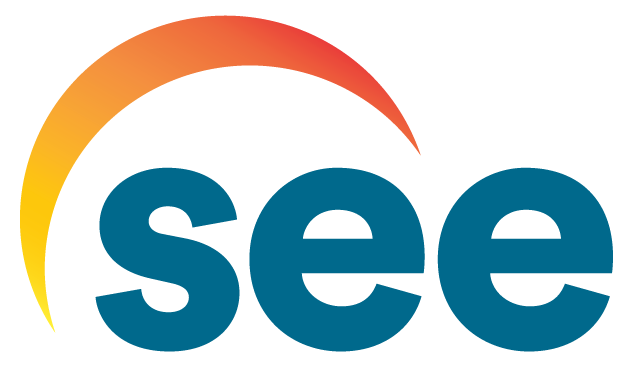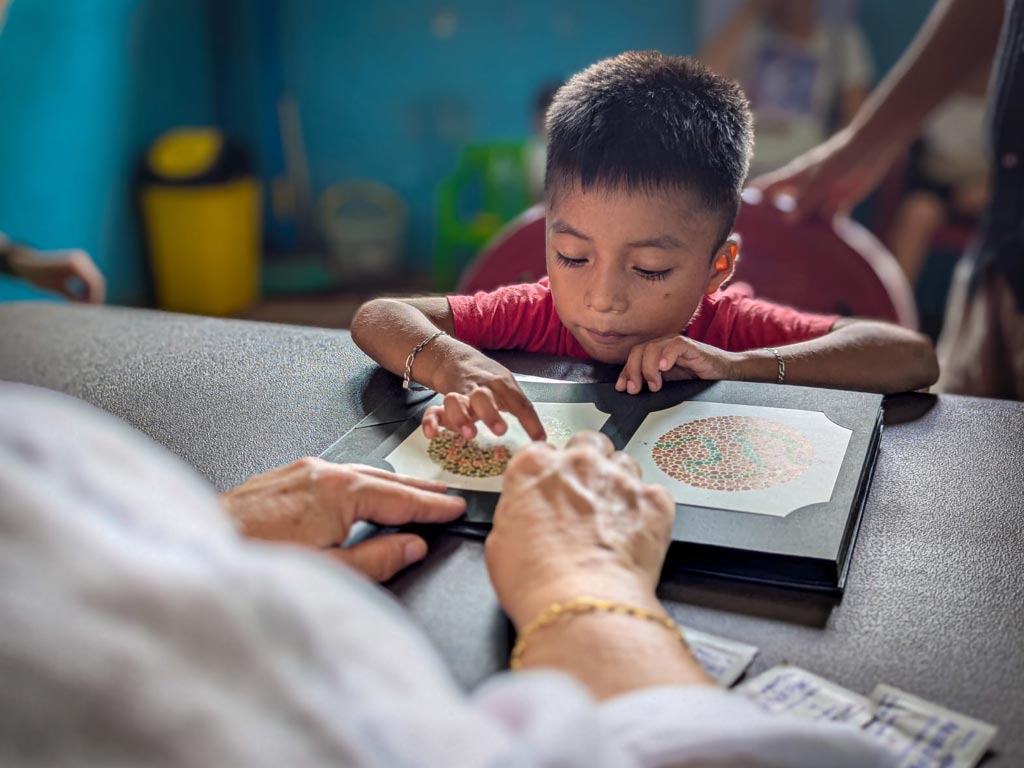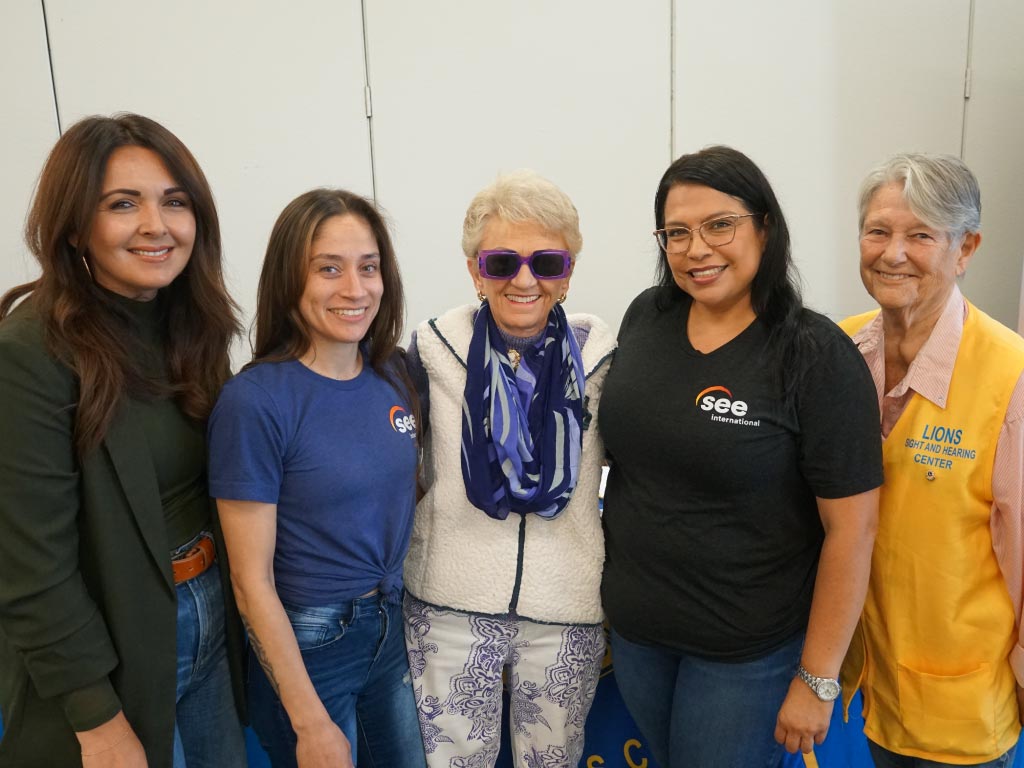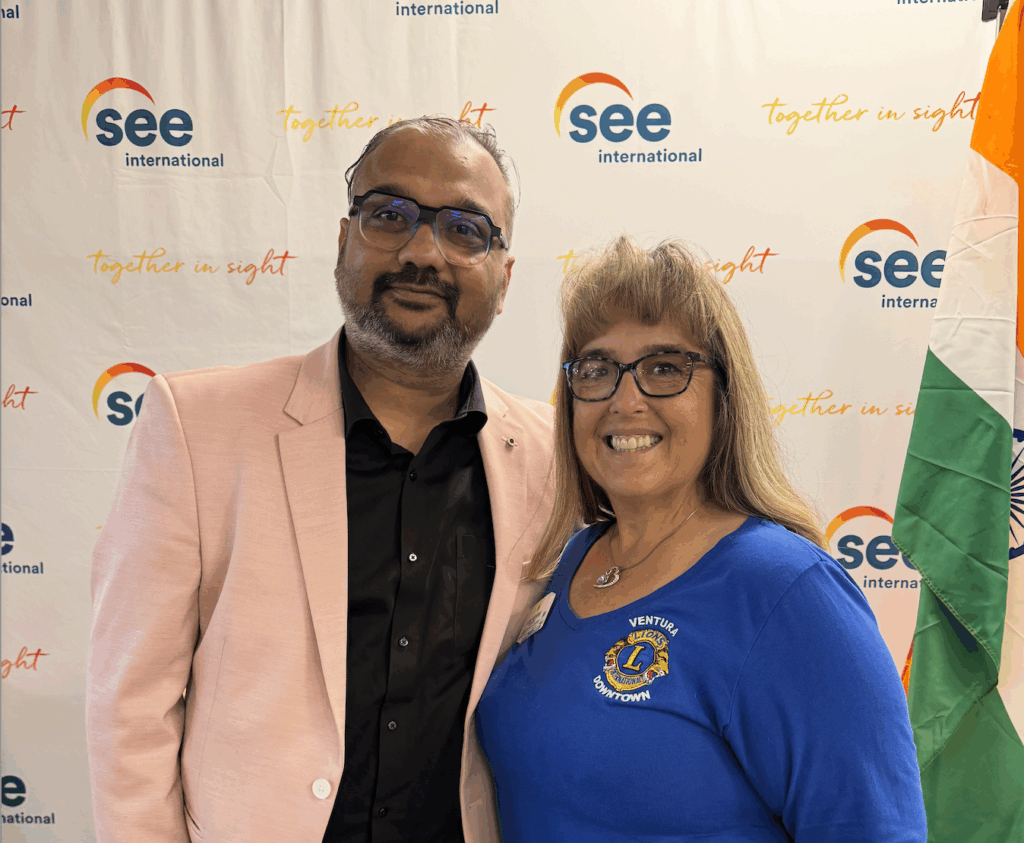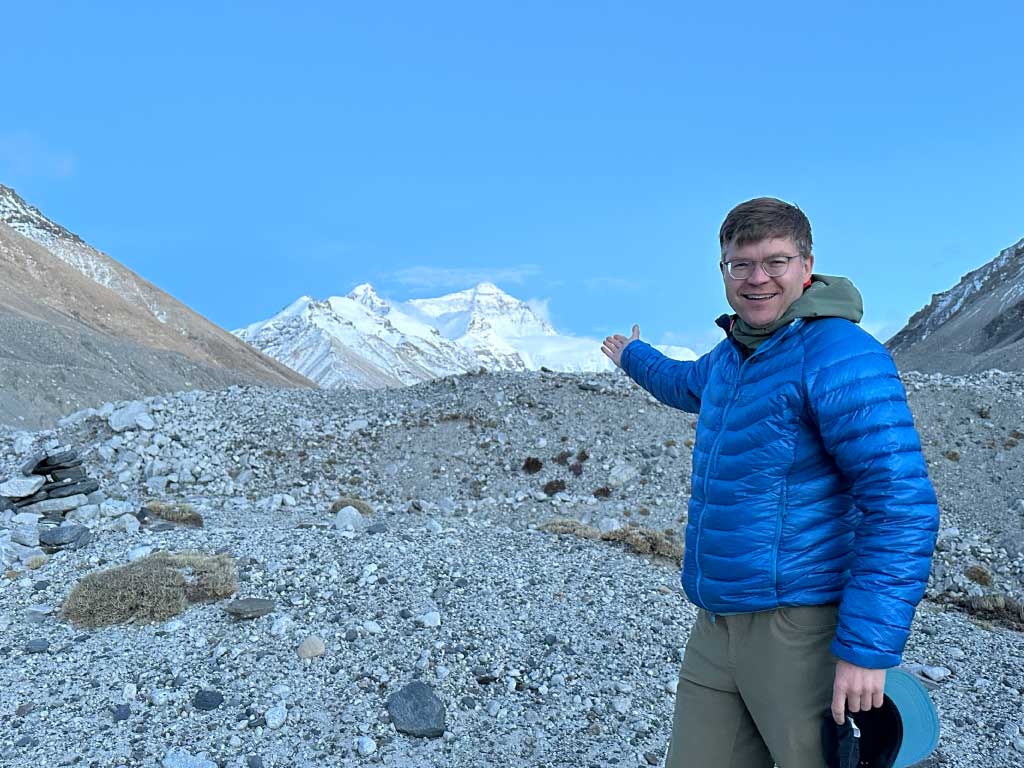Last month, SEE International’s President & CEO Don Bell traveled to the remote town of Nuevo Progreso in the Western Highlands of Guatemala. The purpose of his trip was to witness firsthand the long-term impact of SEE’s partnership with Hospital de la Familia (HDLF), a nearly 50-year-old institution quietly transforming lives through sustainable, community-based healthcare. Over the course of several days, he observed surgeries, engaged with patients, and experienced the far-reaching ripple effect of SEE’s support in the hospital and the surrounding community.
“I was excited for the opportunity to visit HDLF and meet their committed team. I’ve been to many humanitarian program sites in different parts of the world, and it’s always interesting to compare one with the next,” Don said.
Hospital de la Familia, founded in 1976, is a source of pride for the region and a beacon of accessible care. Despite its remote location, the hospital functions as a first-class medical facility, offering services beyond eyecare, including general and pediatric surgery, nutrition programs, and nursing education. It’s the eye center however that drives the hospital’s sustainability, generating roughly 70% of the hospital’s total income. This revenue supports not only the eye program, but also subsidizes other essential services at the hospital and in the community.
SEE’s Ongoing Support and Year-Round Impact
SEE plays a critical role in the HDLF eye center’s operations by providing a steady supply of donated surgical supplies and equipment (DSS), which enables the clinic to run year-round. The surgeries are performed by a rotating team of Guatemalan ophthalmologists, many who travel eight hours by bus from Guatemala City and stay on-site in dormitories during their time in Nuevo Progresso. This locally led system is augmented by visiting American surgeons who provide training, mentorship, and consultation, helping to refine techniques and strengthen the overall operating model. The eye center also leads community outreach initiatives similar to SEE’s local program, SEE Vision Care. Members of the team visit schools and other communal spaces to conduct screenings and bring eyecare to people where they are, making HDLF’s services more accessible.
“The work being done here is a great example of what SEE wants to do, both in terms of the surgical care [that the hospital] provides and the education that’s delivered. Mostly important however, is that they they’ve built a sustainable model that’s producing an ongoing positive impact in the community where they work,” said Don.
“What I found most compelling is that they’ve devised a local solution to a local problem. This isn’t a case of visiting teams doing all the work. Rather, they’ve developed a sustainable, locally driven answer to a challenging problem.”
A Hospital at the Heart of Community Health
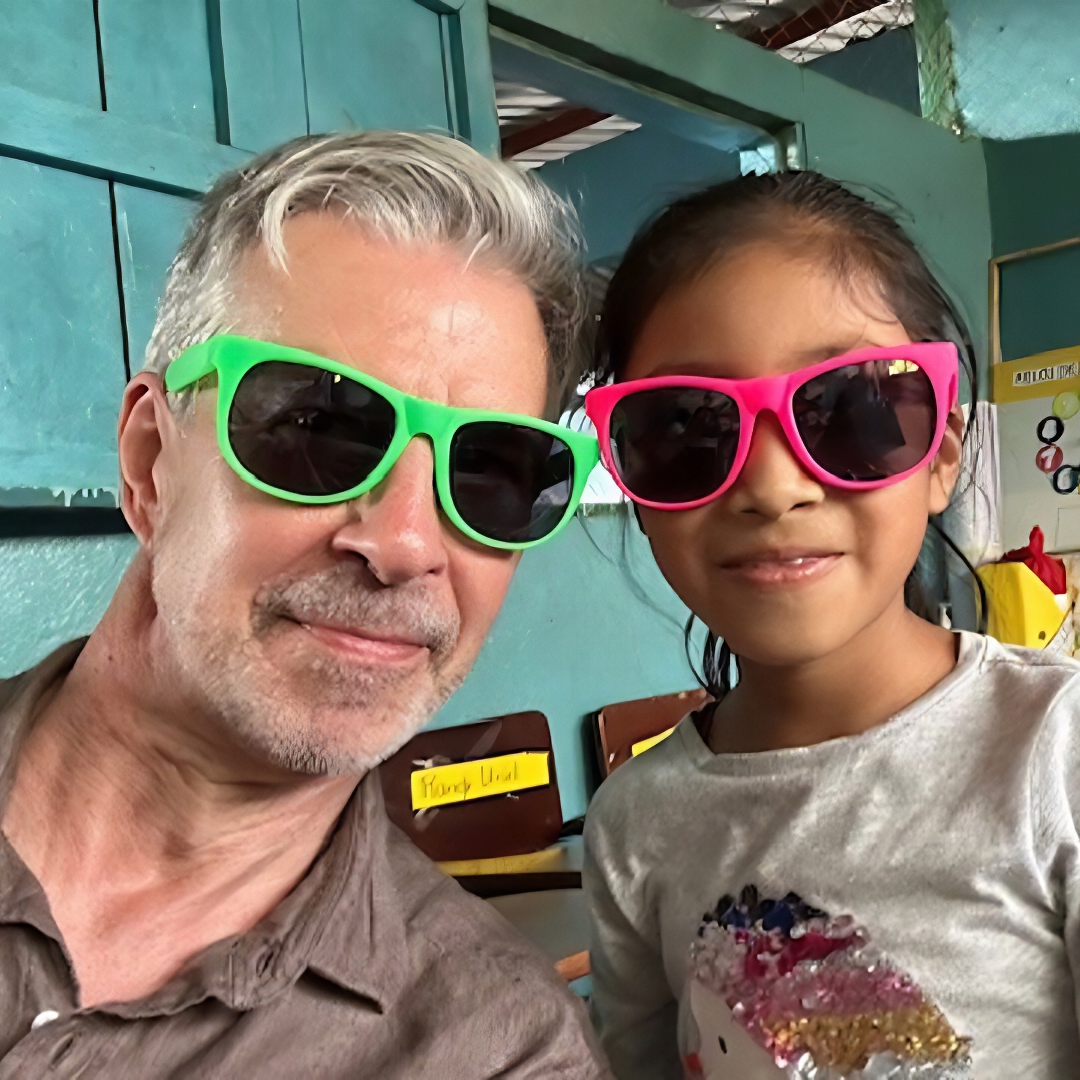
Community outreach is central to Hospital de La Familia’s mission. During his trip, Don joined members of the eyecare team on a visit to a local school where they conducted vision screenings for 150 children and 25 teachers. Students with refractive errors or signs of more serious eye conditions were referred to the hospital for follow-up care.
“It was a very efficient operation involving the Hospital de la Familia team and the volunteers. The kids and their parents would cycle through the various stations to have their eyes examined. Appointments at the eye center were made for any child needing care beyond what could be offered on-site.” Don explained.
“I was working in the final station, which was the distribution of free sunglasses. By the time [the kids] got to me, they were relieved to have completed the medical part and it was all good feelings from there. So, I probably had the best job of anybody, which was just hanging around with the kids, having fun, trying on sunglasses, and letting them walk away with a pair.”
The Urgency of Access to Care
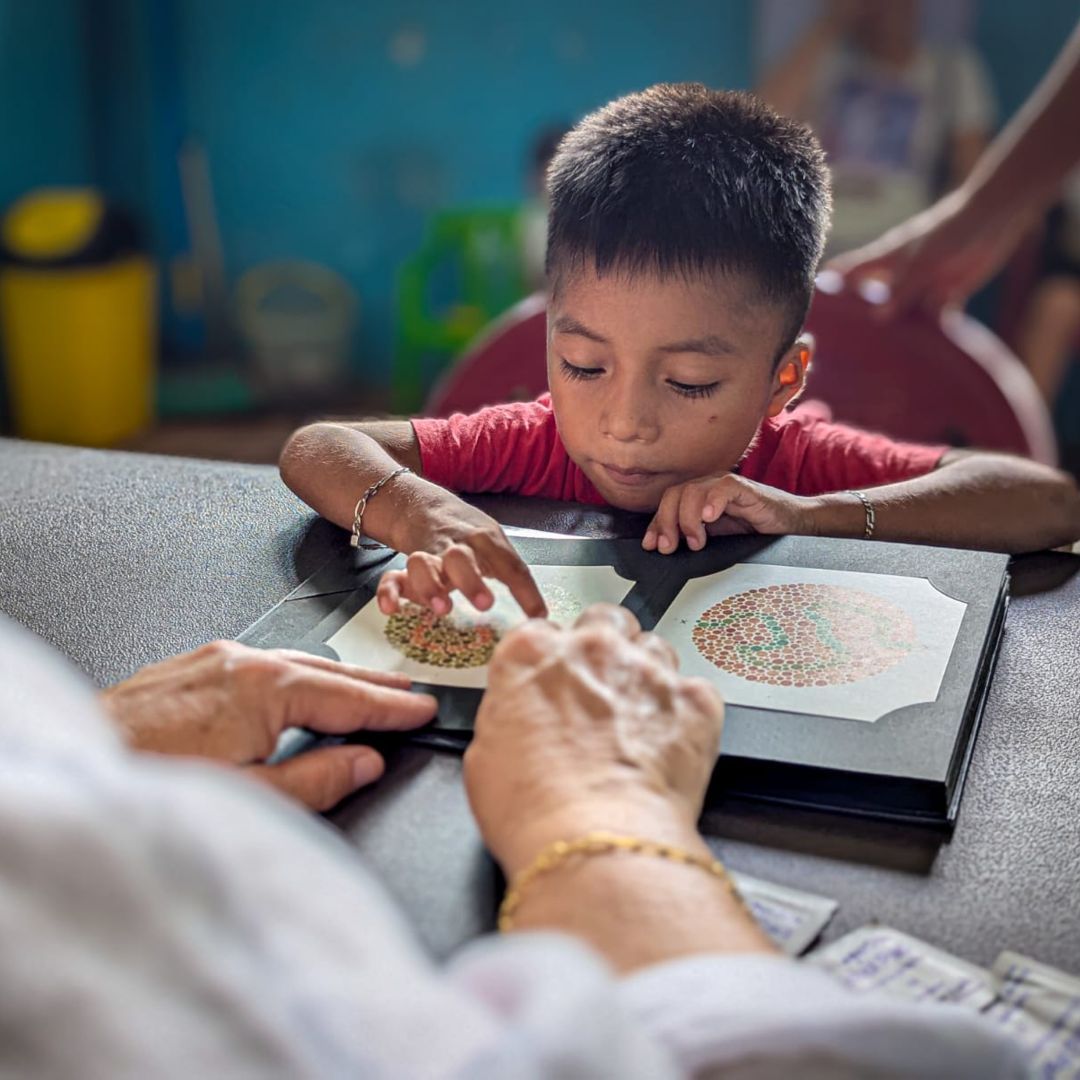
Among the many patients seen that week were two young brothers from the city of San Marcos, both diagnosed with Stickler Syndrome. The younger brother was fitted with -13 prescription glasses, life-changing in and of itself. Sadly, the older brother was already blind due to retinal detachments. Although a retina specialist was present during the visit, it was too late to recover his vision, which devastated the young boy as he realized his blindness would be permanent. His story serves as a reminder of the consequences of delayed care, and the access to treatment that we enjoy as Americans which isn’t always available elsewhere.
“This heartbreaking situation drove home for me the importance of early intervention,” said Don. “It truly illustrates the life-changing difference that access to care offers, and why SEE’s investment in training local surgeons is so important going forward.”
SEE has increased its support for international subspeciality fellowships, including the first retina specialist in the country of Liberia. Vickie Fayiah-Sam, MD, recently completed her SEE-sponsored training at the LV Prasad Eye Institute in India and has returned to Liberia to begin her retina practice.
A Universal Moment of Joy
Still, the most powerful moments come after surgery. Having traveled all over the world to witness the impact of sight restoring surgery, Don spoke to the one inspiring moment that remains universal, no matter what country you’re in: when a patient whose sight has been restored has their eyepatches removed, seeing clearly again for the very first time:
“It’s inspiring to see how universally emotional and overwhelming the experience is – whether in Latin America, Africa, Asia, or elsewhere. Once the eyepatches are removed, the response is always one of joy and gratitude, often with accompanying family members sharing in the excitement,” Don recalled.
It’s in these shared moments that SEE’s mission shines brightest, restoring sight, and with it, independence, possibility, and hope.

